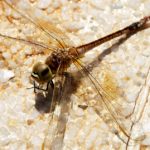How to get rid of varicose veins?
Varicose veins are a common medical condition present in at least 10% of the general population. They are visible as dilated and tortuous veins visible on the back of the legs. They look like delicate branches of a climber plant ascending the wall of a building. Risk factors for varicose veins include obesity, female sex, inactivity, and family predisposition. They occur due to weakness in the wall of veins as a result of which they dilate and become tortuous. They can occur secondary to deep vein thrombosis during pregnancy.
Varicose veins commonly cause aching in the calf after prolonged standing or sitting and at the end of the day. Other clinical features include swelling around the ankle, itching, pigmentation, and ulcer formation. Minor trauma may result in severe bleeding from the distended veins. Though the diagnosis of this condition is easily obvious and does not require any investigation, a duplex scanning of the deep veins is an essential criterion to rule out deep vein thrombosis before any intervention is performed.
How to get rid of varicose veins – treatment options
The cosmetic appearance of the limbs is the main cause of concern for affected patients. Others present with complications like ankle ulcers, pigmentation, and bleeding. There are different treatment methods depending on the severity of this condition:
- Compression therapy – elastic compression stockings are used when the varicose veins have occurred following an episode of deep vein thrombosis. They can also be used in patients who are unwilling to surgery. These patients are given class II compression below-knee stockings which deliver a pressure of 30 mm Hg at the ankle and 10-15 mm Hg at the knee. They help in returning blood from the legs to the heart by compressing the dilated veins.
- Injection therapy – this therapy involves an injection of sclerosing agents into the superficial (surface) veins. These are detergents like sodium tetradecyl sulfate and polidocanol. The detergent destroys the endothelial lining of the vein leading to thrombosis, fibrosis, and finally obliteration. Complications of sclerotherapy include allergic reaction, pigmentation, thrombophlebitis, deep vein thrombosis, and skin necrosis.
- Ultrasound-guided foam sclerotherapy – the detergent polidocanol is a form of foam that is injected into the superficial veins under ultrasound guidance. Since the drug is delivered as foam, a lesser dose is required.
- Surgical treatment – ligation of the proximal (upper) end of the vein is done to prevent backflow of blood. Along with the above procedure surgical removal of tortuous veins (phlebectomy) around the calf is also done. The surgery is performed under spinal/epidural or local anesthesia. The ulcers which fail to heal require skin grafting.
- Newer techniques – radiofrequency ablation of varicose veins is done. Then the probe is passed up the saphenous vein from the lower leg and withdrawn under ultrasound control while radiofrequency waves are used to destroy the endothelial lining. It generates heat which causes destruction and fibrosis/obliteration of the vein. This modality is minimally invasive, results in no scarring but it is very expensive. Endovenous laser ablation is a more recent technique and its mechanism of action is the same. The laser probes are marginally less expensive than radiofrequency ablation.
Complications of surgery
The most common complication of varicose vein surgery is the recurrence of all symptoms. This can either be a recurrence of a previously treated venous system or a development of new varicosities arising. Bruising and sensory nerve injury can also occur. It results in numbness and tingling around the area of surgery but it invariably recovers.
Varicose veins are a predominantly cosmetic problem of the legs associated with dull aching pain. If not treated in time, they may result in severe complications. If you develop this problem, it is always useful to consult your doctor for the prevention of further disfigurement and complications.




























